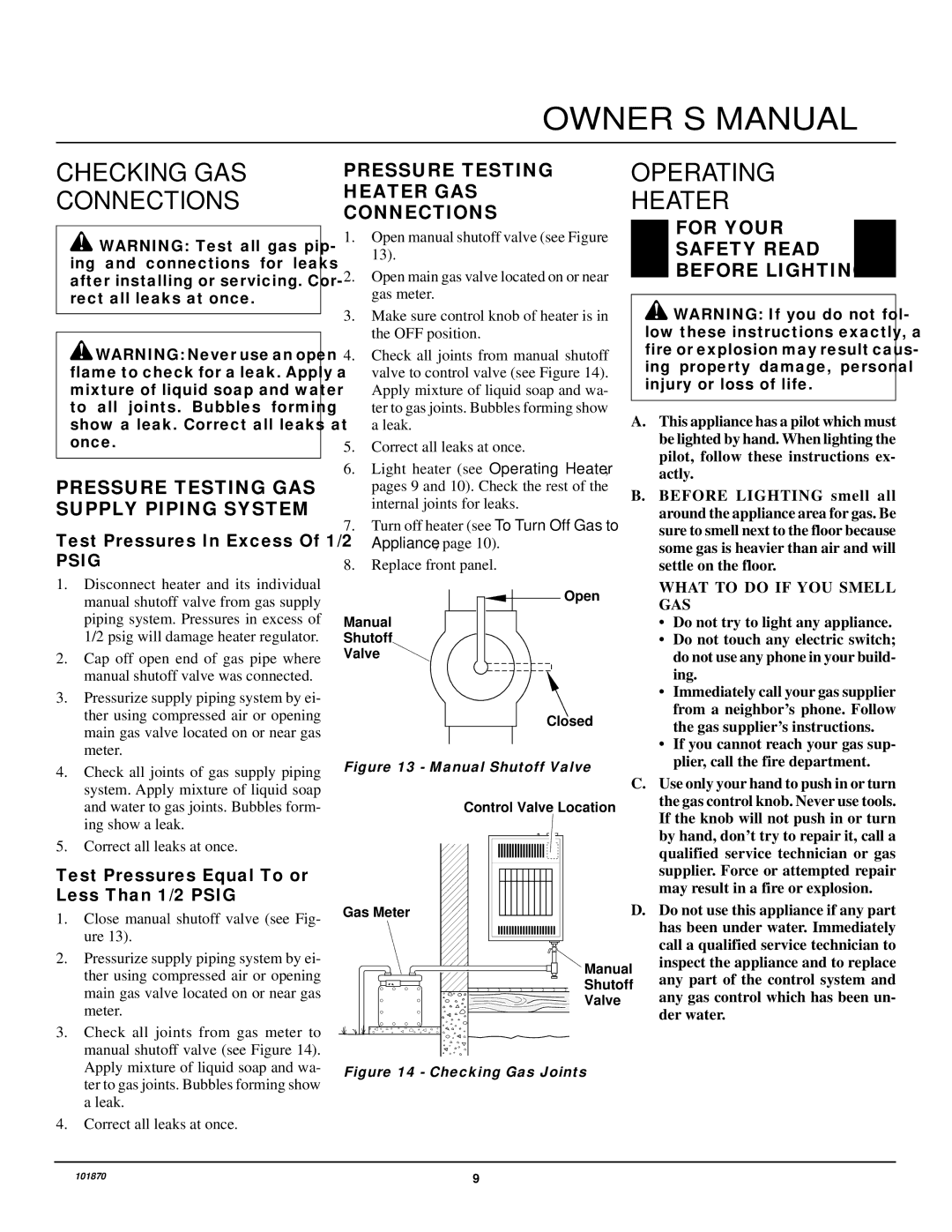CGN6, CGN10A specifications
Desa CGN10A and CGN6 are two innovative models in the Desa line of heating appliances, combining cutting-edge technology with user-friendly features designed to enhance the heating experience in a variety of settings. These appliances are particularly noted for their versatility and efficiency, making them suitable for both residential and commercial applications.The Desa CGN10A stands out with its impressive heating capacity, providing an excellent solution for larger spaces. It is engineered with advanced venting technology that ensures optimal airflow, allowing the unit to quickly and evenly distribute heat throughout the room. This model features an adjustable thermostat and fan settings, enabling users to customize their heating experience according to their specific needs. The eco-friendly design reduces energy consumption while maintaining superior performance, making it a smart choice for environmentally conscious consumers.
On the other hand, the Desa CGN6 is perfect for smaller areas or more limited spaces. Despite its compact size, it does not compromise on heating power or efficiency. This model utilizes a highly efficient combustion system that maximizes fuel usage, translating into lower operational costs for users. Additionally, its lightweight and portable design makes it suitable for various settings, whether it's in a workshop, garage, or even outdoor gatherings.
Both models are equipped with safety features that ensure peace of mind during operation. They include automatic shut-off functions and safety sensors that detect issues such as overheating or improper venting. Furthermore, the appliances are designed with user accessibility in mind, featuring intuitive controls and easy-to-read displays that simplify the operating process.
In terms of aesthetics, both the CGN10A and CGN6 boast sleek designs that can seamlessly integrate into a range of interior styles. The durable construction ensures longevity, making these models a reliable investment for years to come.
In conclusion, Desa CGN10A and CGN6 models exemplify the perfect blend of efficiency, technology, and design. With their responsive heating capabilities, user-friendly features, and emphasis on safety, they stand out as leaders in the heating appliance market, catering to diverse user needs while prioritizing sustainability.

